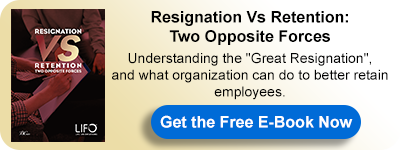LIFO® Leadership Styles
Adapting-Dealing Leadership Style
A manager who is adapting dealing will be occupied with instilling positive vibes and harmony among his team. Will build a good sense of cohesiveness and commitment among the team. He will also care about responsiveness among team members and being sensitive to each other. An adapting dealing manager will also care about being liked by his team members.
If this is your leadership style, be cautious with:
You might avoid conflict as you care and strive to build harmony. This might cause resentment to build within your team as hot topics are avoided in your attempt not to stir conflict. This might lead to pent-up anger and stress. You might also find yourself over-compromising as you yearn to build consensus and good vibes among the team, leading to your burning out. Remember, productivity needs a healthy open culture where people can hold each other accountable and engage in healthy debates and conflicts.
Controlling-Taking Leadership Style
A controlling-taking leadership style will usually seek and initiate change. Managers with this style act quickly. They don’t wait for things to happen. They make things happen. This style of management is about taking risks. They are also confident and assertive. In addition, they are also good at finding, seeking, and grasping opportunities. Therefore, they are risk-takers.
If this is your leadership style, be cautious with:
As you are known for being competitive, you might find yourself pushing your team hard, leading to their burnout. You might also miss listening to them in your attempts to achieve goals. This might cause them to feel unappreciated. You might need to work on your empathy and build some flexibility as you listen to their opinions. Your pushing over might cause you to feel upset as things don’t go as per your plans. Some adaptability can be used from your Adapting dealing colleague. Remember, productivity needs flexibility, tolerance, and appreciation for a job done well.
Supporting-Giving Leadership Style
A Supporting Giving style is supportive and eager to help. They usually set high standards and strive and push others to strive and reach those. They are highly accepting of people, whether their strengths or flaws. A supportive giving style is very dedicated to standards of quality and excellence. They are also good team players and loyal.
If this is your leadership style, be cautious with:
As you strive to reach your standards of excellence, you might not notice that the standards are pretty high and that they are being pushed hard out of their comfort zones. Moreover, you might neglect your own feelings of disappointment and fail to express them healthily, leading to pent-up resentment. You might not easily forgive team members who are at fault. Hence, they might feel it, which causes them discomfort and disappointment. Your strive for productivity needs to stretch team members' capabilities, not break them.
Conserving-Holding Leadership Style
A conserving holding leadership style is analytical and follows up and through. They are not the typical risk-taker as they tend to be cautious and conservative. They will go with logic and information. They prefer a systematic approach to problem-solving. They are known for being organized. Conserving holding is practical and prefers the old and tested methods for doing things.
If this is your leadership style, be cautious with:
As you are data-driven, highly analytical, and methodical, you might fail to accept different innovative ideas. Hence, you risk falling into the trap of repeating old methods that might not be effective. In addition, as you work hard within a structure, you might miss giving team members freedom and autonomy, thus leading to frustration among employees who need to do things their own way. Remember that productivity needs engagement which in turn needs freedom and autonomy.
For more about this topic, download our latest book "Resignation Vs Retention: Two Opposite Forces" for FREE:
